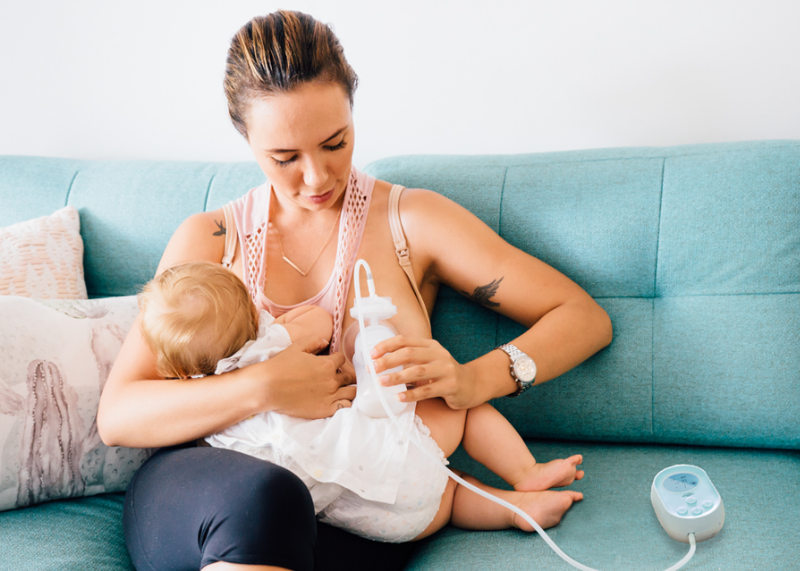If you’re using a breast pump to regularly or exclusively express breastmilk for your baby, you might be wondering how to stop breast pumping when it comes time to wean. It’s important that weaning from the pump is done slowly to avoid discomfort from engorgement, painful plugged ducts, or even mastitis. Here are some tips for how to stop breast pumping safely and painlessly.
Stop breast pumping by gradually increasing time between pumping sessions
Rather than sticking to your pumping schedule, use your comfort as a guide on when to pump. Don’t wait until you’re very uncomfortable, but you might find that you can go an additional 20 or 30 minutes beyond when you normally would pump. Do this for a few days, and then you might find you can go a little longer. For example, if you normally pump at 9am, 12pm, and 3pm, you might find you can wait until 12:30pm, and then 4pm. After a while, it might become more like 9am and 2pm, making it so you can naturally drop a pumping session. Gradually build the amount of time between pumping sessions every few days, but don’t worry too much about the clock.
This is a great method for weaning from the pump because it’s fairly passive and natural. It can take several weeks, depending on how often you normally pump, so patience is key.
Weaning from the pump by gradually decreasing time of pumping sessions
Deviating from your normal pumping schedule might not be an option for you. Maybe you’re only able to take pumping breaks at specific times each day, in which case gradually increasing the time between pumping sessions is not an option. You can still gently wean from the pump by gradually decreasing the amount of time you spend pumping during each session. For example, if you normally spend 15 minutes pumping during your session, decrease it to 13 minutes. After 2 or 3 days, or once you notice you’ve adjusted comfortably to this shorter time, reduce it to 11 minutes – and so on and so forth. Eventually you’ll get down to the point where you’ll just be pumping a couple minutes each session, at which point you could start reducing pumping sessions to eventually stop breast pumping.
Stop breast pumping by reducing pumping sessions one at a time
Gently wean from the pump by dropping one session at a time, every 2-3 days. Some women find it’s most comfortable to start by dropping and afternoon pumping session first, as that’s when levels of prolactin are lower and milk output is generally lowest. Try to stagger the sessions you drop to avoid engorgement – for example, if you normally pump at 9am, 12pm, 3pm, 6pm, and 9pm, start by dropping 12pm, then after a few days try dropping 6pm. Don’t drop 12pm and then 3pm, as that would suddenly leave a bigger gap between pumping sessions.
Some women find it’s best to combine this method of weaning from the pump with gradually decreasing the time of one pumping session first, rather than removing one pumping session cold turkey. This takes a bit longer, but this might be the most comfortable way to stop breast pumping, especially if you produce a lot of milk.
Why you shouldn’t stop pumping breast milk cold turkey
If you’ve been pumping or breastfeeding for a while, you’re probably aware of how uncomfortable it feels to be engorged if for whatever reason you’ve missed a pumping session, or baby has slept for a longer time overnight. By now your breasts are used to producing a certain amount of milk each day, and if you suddenly stop pumping your breasts are still going to produce that same amount of milk. If you’re not draining your breasts, they’ll become engorged. Engorgement can be quite uncomfortable, but it can also cause other problems like inflammation of the milk ducts, plugged ducts, and even mastitis. Gradually weaning from the pump allows your breasts time to adjust to the decrease in demand, which will prevent most discomfort or inflammation from engorgement.
If possible, try to allow yourself several weeks for weaning from the pump.


